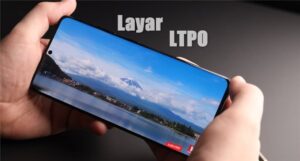AMOLED display is a screen panel technology developed by Samsung, and has replaced IPS LCD. Initially, it was only available in flagship class smartphones, but now it has spread to midrange phones; starting from Samsung, Oppo, Realme, Xiaomi, and others.
Now, what is the difference between AMOLED and IPS screens, and why is AMOLED better?
What is an IPS LCD screen?
IPS (in-plane switching) is a type of LCD (liquid-crystal displays) screen technology. This technology uses liquid crystal layer molecules in each pixel, and is arranged or reoriented by an electric field. A wide backlight is placed behind it as a source of light emitter.
When the white backlight shines on each liquid crystal pixel, the color light will appear on the pixel. Each pixel is controlled by horizontal and vertical filters to change the color.
Advantages of IPS LCD
- Cheaper production costs compared to AMOLED.
- Does not experience burn-in effects like AMOLED, so it is very durable over time.
Disadvantages of IPS LCD
- Standard color gamut, except for top-tier panels.
- Limited contrast ratio, range of 1000:1.
- More power hungry compared to AMOLED, under normal brightness usage conditions.
- Slower response time compared to AMOLED.
- Thicker panel due to the presence of backlight.
What is AMOLED Screen?
Active-Matrix Organic Light Emitting Diode (AMOLED) is a screen panel technology developed from OLED screen. The screen consists of thin films, each pixel contains organic molecules, which will emit light when electricity flows through it.
Each pixel can emit its own light, and when displaying the color black, it will be very dark because that pixel is turned off. Don’t be mistaken, this ability has a big influence on the visual display quality on the screen, especially for displaying HDR content.
AMOLED screen is a very interesting technology and has many advantages compared to IPS LCD in general. However, this technology is not easy to apply to smartphones, especially since the component prices for making AMOLED screens are much more expensive than IPS LCD screens. This causes smartphones with AMOLED screens to be more expensive.
Currently, the most widely used AMOLED technology is Samsung’s Super AMOLED with full HD resolution. You should know that Super AMOLED technology is a screen that already has integrated touch screen.
Advantages of AMOLED Screen
- The color black is very deep.
- Very high contrast ratio, more than 1,000,000:1.
- Very wide color gamut.
- Each pixel emits its own light.
- Less power consumption (efficient).
- Slightly better view angle than IPS.
- Fast response time (good for gaming).
- The white color produced is more comfortable for the eyes.
Disadvantages of AMOLED Screen
- Has the potential for burn-in.
- More expensive than IPS LCD.
Differences Between AMOLED and IPS LCD Screens
This is how AMOLED looks like, with its black color very black without light.
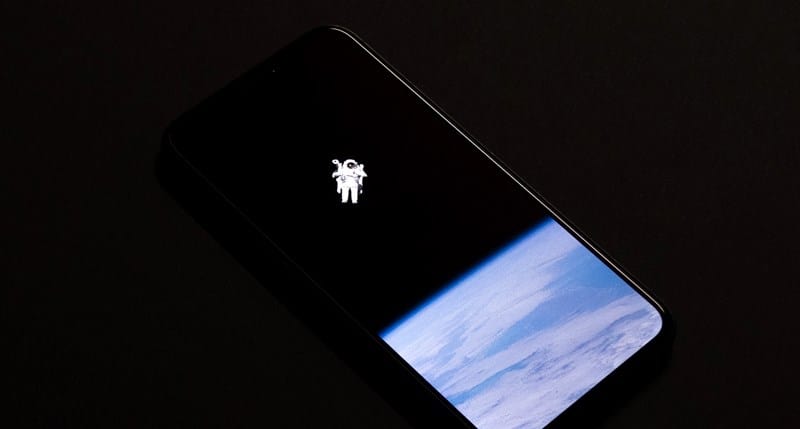
It’s clear that AMOLED is very different from IPS LCD. But what distinguishes them and what are the benefits of using an AMOLED phone, such as the Poco X3 Pro or Redmi Note 10 Pro? Here are some of the advantages of an AMOLED screen.
- Black Level
The way AMOLED and IPS LCD display light is different. To turn on an LCD pixel, it needs to be backlit from behind the screen panel. When displaying a black screen, the pixel will cover the backlight.
AMOLED is different. It does not require a backlight like an LCD screen. Its technology is more advanced, and each pixel on the screen can produce its own light. When displaying black, the pixel is turned off, so it doesn’t emit any light. This makes black look very black, which cannot be achieved by an LCD screen.
A dead pixel does not affect other pixels. So while one pixel is turned off, other pixels can remain on. In short, AMOLED technology will control every pixel on the screen.
- Contrast Ratio
A wide contrast ratio will provide a difference in color from dark to bright, making it more flexible and wide. With a super wide contrast ratio, AMOLED can display colors more clearly, in detail, and purely. Its contrast ratio can reach over 1 million to 1.
In contrast, IPS LCD screens have a very limited difference between black and bright levels. The best IPS LCD screens will have an average contrast ratio of 1500 to 1.
- Brightness
An IPS screen has strong brightness thanks to its backlight, which can be very useful in bright places.
OLED may be inferior to IPS LCD, but with the development of AMOLED technology, its average brightness can be even better with peak brightness capabilities, and it can even beat IPS LCD screens.
High brightness is useful when using a phone outside in very bright light conditions, where high brightness can fight environmental light and make the display still visible.
You can see the level of brightness on a smartphone’s specifications.
- Viewing Angle
Viewing angle refers to the angle from which the screen is viewed from the side, top, or bottom. LCD has a filtering layer that indirectly blocks some light and depth. This makes its viewing angle slightly reduced.
In contrast, AMOLED can be seen clearly from any angle, and its colors remain the same without significant changes.
Although IPS has a good viewing angle, AMOLED can be even better.
- Producing Clear Colors
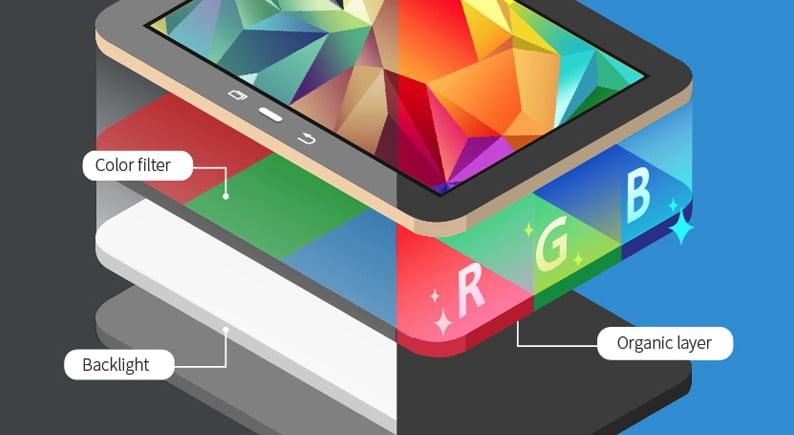
An IPS LCD panel works with white backlight filtered through crystal molecules, which then produce colors.
AMOLED, on the other hand, produces its own light and color in each pixel without the need for backlight or filters. This technology produces richer, purer, and more natural colors. Moreover, its color gamut coverage is also very high.
- Thinner Screen Panel
As mentioned earlier, AMOLED does not use backlight, making it thinner and more flexible than LCD. Moreover, the Super AMOLED type has been integrated with touch sensors, making the screen even thinner.
With a thin screen panel, the smartphone’s body becomes thinner too. And, as you know, phones with thin bodies are more comfortable to hold.
- Flexible Display
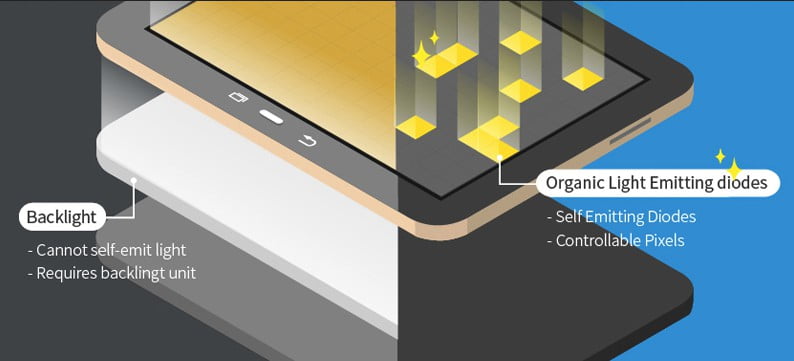
IPS LCD updates every pixel whenever there is a brightness change (with backlight).
While AMOLED is different, it can update the color and brightness of each pixel independently. This means that changes in color and brightness of each pixel do not affect other pixels.
This makes the screen have a faster response time, including when switching between on and off states.
- Battery Efficient
With all the advantages offered by AMOLED, will it make it a battery hog?
The answer is no. This is based on the fact that AMOLED screens do not require a backlight. Each pixel on the screen is an RGB LED, which is more power-efficient. This will be more battery efficient when many parts of the screen display black. Because the pixels are turned off, this can reduce power consumption.
However, AMOLED can also consume a lot of power, this happens when the screen is set to a very bright level (above normal).
Benefits of AMOLED Screen Compared to IPS
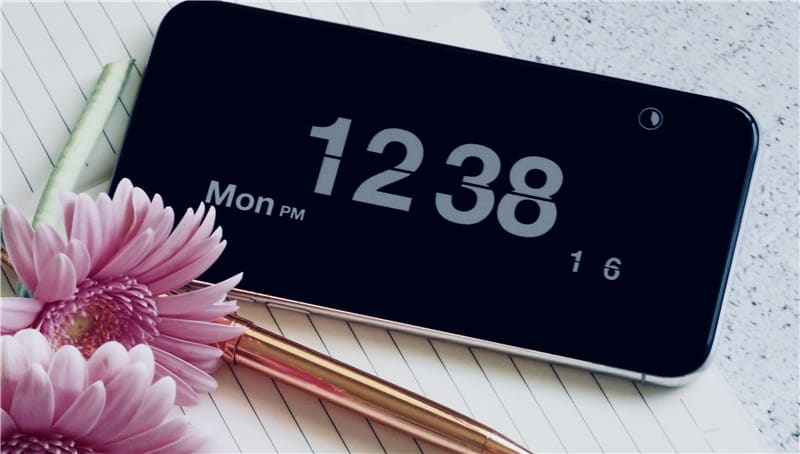
First, smartphones with AMOLED screens can be used for AOD (Always On Display). This feature can make the screen always on. For example, displaying the AOD clock. The screen will display a clock image with a black background. The black part of the screen will be completely off, and will only light up in the clock image area. Yes, because there are parts that stay lit, the battery will run down faster, how fast depends on the screen’s optimization capabilities.
Second, the display is still clearly visible when in bright areas, such as outdoors or even in bright sunlight. This is because AMOLED screens have high brightness. Remember! If they have high peak brightness capabilities.
Third, it can be used as an LED notification. When there is a new notification, the screen will only light up partially. The part of the screen that displays the notification will light up, and the other part (dark black) will remain off, not lighting up.
Does the AMOLED screen need an anti-scratch coating?
Some may think that AMOLED panels are thin, do they need an anti-scratch coating. In general, every smartphone screen is coated with glass, both IPS LCD and AMOLED smartphones.
So, using an anti-scratch coating would be better to protect the screen glass from breaking.
AMOLED Screen Burn-in
Is the Super AMOLED screen easily damaged? No.
Burn-in used to be an unacceptable disadvantage. But that was in the past (or early days of OLED technology in phones). Now, you need to know that the AMOLED manufacturer (Samsung) has been able to solve this problem (or burn-in). It doesn’t mean that it is completely immune, but the resistance to burn-in has been improved.
That means you don’t need to worry about burn-in on your AMOLED phone. Yes, now you know that the Super AMOLED screen is highly valued in smartphone screens, even becoming a plus point. Many users are using current-generation AMOLED smartphones without any problems.
No need to worry when displaying white, because the result tends to be slightly yellowish or maybe a little brown. It’s normal and not a problem, in fact, the screen will be very comfortable to look at. It should be noted that the wide range of colors can be more eye-pleasing.






